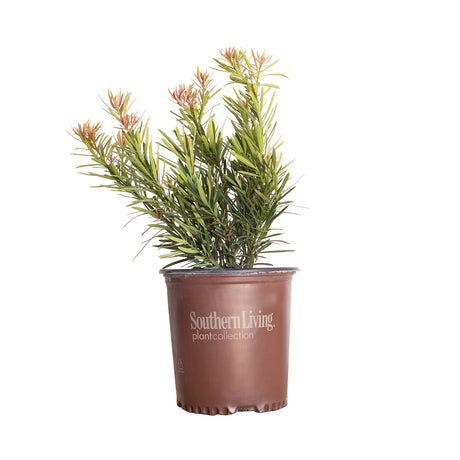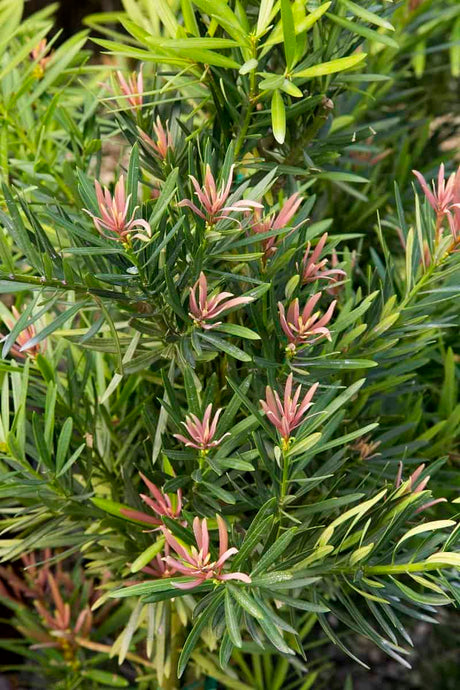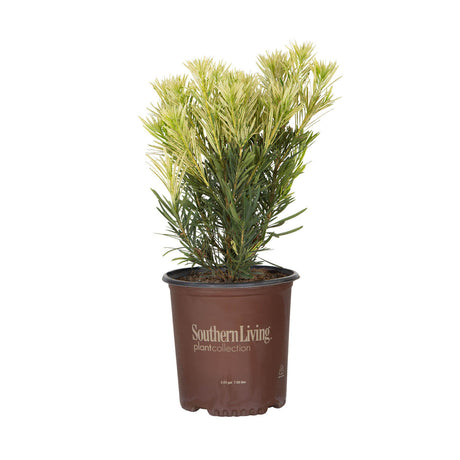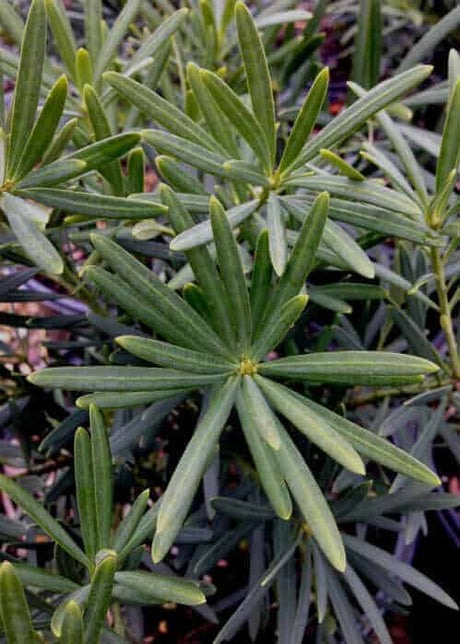FiltersFilter & Sort
- Sold out
- Sold out
- Sold out
Podocarpus is a genus of evergreen coniferous trees and shrubs that are native to regions such as China, Japan, and Southeast Asia. Here are some reasons why you should consider adding Podocarpus to your garden and how to grow them successfully:
Reasons to Have Podocarpus in Your Garden
- Attractive Foliage: Podocarpus has dense, lush, evergreen foliage that provides a beautiful backdrop to any garden or landscape. The leaves are dark green, glossy, and can range in shape from narrow to oval.
- Versatility: Podocarpus can be used in a variety of ways in your garden or landscape. They can be grown as a specimen tree, a hedge, or a screen.
- Low Maintenance: Podocarpus is low-maintenance and can thrive in a range of environmental conditions. They are also resistant to pests and diseases.
- Privacy: Podocarpus can be used to create a natural privacy screen, making it a great choice for those who value privacy in their outdoor space.
- History: Podocarpus has a rich history and is considered a sacred tree in some cultures. It has been used for medicinal purposes, as a source of wood, and as an ornamental plant.
How to Grow Podocarpus
- Soil: Podocarpus prefers well-drained soil that is rich in organic matter. They can tolerate a range of soil types, but do not like soil that is too heavy or compacted.
- Sunlight:
- Watering: Podocarpus requires regular watering, especially during the first year after planting. Water deeply and infrequently, allowing the soil to dry out slightly between waterings.
- Fertilizer: Podocarpus does not require regular fertilization. You can apply a slow-release fertilizer once or twice a year during the growing season to promote healthy growth.
- Pruning: Podocarpus benefits from pruning, which can help maintain their shape and encourage new growth. Prune in the late winter or early spring, cutting back any dead or diseased branches.
Does Podocarpus like sun or shade?
Podocarpus prefers full sun to partial shade. Plant them in an area that gets at least six hours of direct sunlight per day.
Is Podocarpus fast growing?
Yes, Podocarpus shrubs are considered a moderately fast-growing plant, particularly under ideal conditions. It typically grows about 12-24 inches per year, depending on the variety and growing environment. Smaller sized plants take a few years to establish roots, but after they do, you will see growth rates of 1-2 feet annually.
Is Podocarpus toxic to dogs?
Yes, Podocarpus plants, including varieties like the Buddhist Pine, are considered toxic to dogs if ingested. Symptoms of toxicity can include vomiting, diarrhea, and abdominal pain. If you suspect your dog has eaten Podocarpus leaves or seeds, contact your veterinarian immediately for guidance.
History of Podocarpus
Podocarpus has a rich history and is considered a sacred tree in some cultures. In traditional Chinese medicine, it has been used for its medicinal properties, which include treating respiratory infections and promoting healthy blood circulation. It has also been used as a source of wood for furniture and construction.
Podocarpus has been cultivated as an ornamental plant for centuries, prized for its attractive foliage and low maintenance requirements. In conclusion, Podocarpus is a beautiful and low-maintenance choice for your garden or landscape. By following the tips above, you can enjoy healthy and vibrant Podocarpus in your garden for many years to come.



















